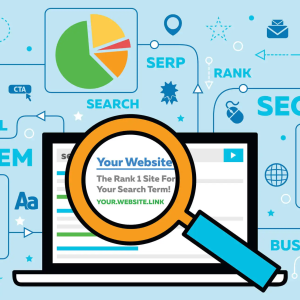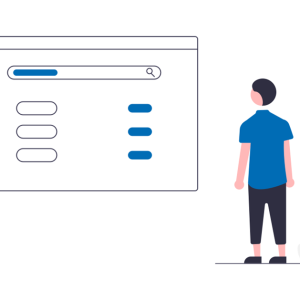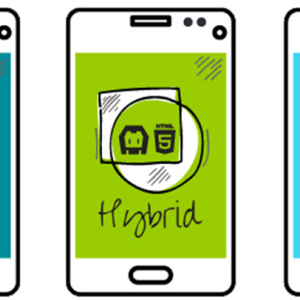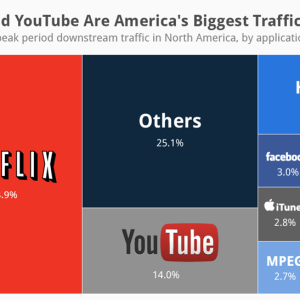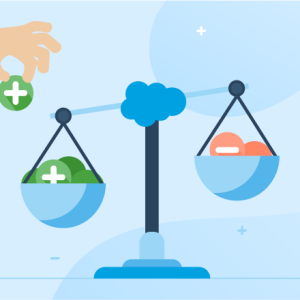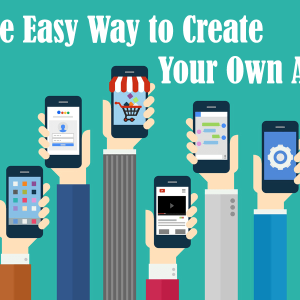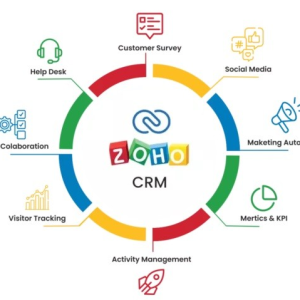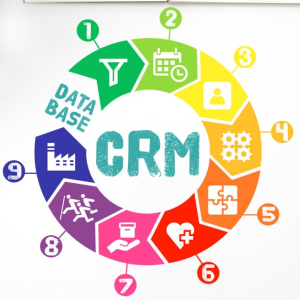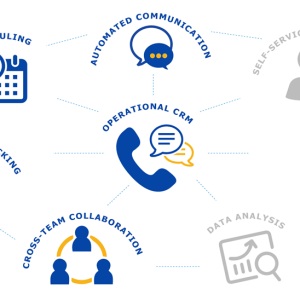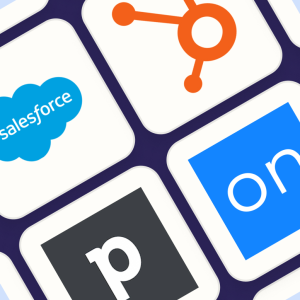Introduction
Website development can be a complex process, but it’s important to take the time to do it right to create a website that will meet the needs of the client and help them achieve their goal.
In this article, we’ll take a look at some of the key things to keep in mind when designing or developing a website, such as creating a user-friendly interface, making sure the website is responsive to different devices, and ensuring that all of the content is well-written and relevant.
#1 Plan Your Website Development Project

The first stage of website design and development is planning and research. This involves figuring out what the client wants their website to achieve and creating a plan for how to make that happen. It’s important to gather as much information as possible during this stage to create a website that is tailored specifically to the client’s needs.
Define the project goals
One of the most important steps in website development is defining the project goals. This will help to ensure that the website is designed and developed in a way that meets the needs of the client. It’s important to take into account what the client wants to achieve with their website, as well as what they hope to accomplish with it. Once the goals are clear, it will be easier to move forward with the development process.
Outline the website design and development process
Website design and development encompasses the visual design of a website and the code that makes it function. It can be a complex process, depending on the needs of the client, and involves a variety of different skill sets, including web development, graphic design, user experience (UX) design, and information architecture (IA).
The goal of website design and development is to create a website that is both visually appealing and easy to use. A well-designed website will have a user-friendly interface that makes it easy for visitors to navigate, as well as relevant and well-written content that is engaging and informative.
What happens once the website is designed?
Once the website design has been finalized, the website development phase can begin. This is when the actual coding and programming takes place, and it can be a lengthy process, depending on the complexity of the website. The website development team will start by creating a prototype of the website, which will be used to test out the functionality and ensure that everything is working as it should. Once the prototype is approved, the website development team will begin working on the actual website code and programming, which can take several weeks or even months to complete.
To sum it up,
Design: is where the look and feel of the website are created. It’s important to create a user-friendly interface and to consider how the website will look on different devices.
Development: is where the website is built and all of the content is added. It’s important to make sure that all of the content is well-written and relevant to the client’s business.
Choose the right team for the job
If you want to have a website that looks professional and is easy on your wallet, it’s best not to do all of the work yourself. A team can save time by offering their expertise in different areas like graphic design or coding so they’re able to provide more comprehensive services at once than if each person were only responsible for one type of related task alone
A good thing about hiring an agency is how quickly everything gets done because multiple minds are working together towards achieving similar goals
When it comes to website design and development, one of the most important things is to make sure that you choose the right team of developers to work with. There are a few things you should keep in mind when making your decision, such as the size of the team, their level of experience, and their portfolio.
It’s also important to make sure that you have a clear idea of what you want your website to achieve before starting the project. This will help the website development team to understand your vision and create a website that meets your needs. Once the website is up and running, it’s important to monitor the performance and make sure that it’s meeting the goals you set out for it. Regular updates and maintenance will help to keep your website running smoothly and ensure that it continues to meet your needs.
Set a budget and timeline
When setting a budget and timeline for website development, you as a business owner might have several questions like
- How to set a budget for your website development project?
- How to create a timeline for your website development project?
- What to consider when planning your website’s budget and timeline?
- Which factors can affect the overall cost and timeframe of your website development project?
But this is why here we are, to make your process easier. Considering the website development, the budget and timeline can vary greatly from project to project. It’s important to sit down with your client and discuss their specific needs to come up with a budget and timeline that works for both parties. Here are 10 things to keep in mind when setting a budget and timeline for your next website development project:
1. The cost of website development can vary depending on the size and scope of the project.
2. The timeline for website development can also vary depending on the size and scope of the project.
3. It’s important to consider the needs of the client when budgeting for website development.
4. The budget for website development should also include room for unexpected costs.
5. The timeline for website development should allow for some flexibility in case of unforeseen delays.
6. Several factors can affect the cost and timeline of website development, such as the complexity of the project, the skills of the developers, and the availability of resources.
7. The budget for website development should be reviewed and updated regularly as the project progresses.
8. The timeline for website development should also be revisited and revised as needed throughout the project.
9. It’s important to communicate with the client regularly to keep them updated on the progress of the project and to ensure that they are happy with the results.
10. The budget and timeline for website development are important factors to consider when planning a successful project, but they should not be the only factors. There are many other important considerations, such as the quality of the final product, that should also be taken into account.
When it comes to website development, the budget and timeline can vary greatly from project to project. It’s important to sit down with your client and discuss their specific needs to come up with a budget and timeline that works for both parties. Keep these 10 things in mind when budgeting and timing your next website development project and you’ll be on your way to success.
Test, test, test!
Testing a website is an important part of the website development process. It’s important to make sure that the website is functioning correctly and that all of the links are working properly.
Launch and maintain your website
Launching and maintaining a website can be a daunting task, but there are a few key things to keep in mind to make the process as smooth as possible. One of the most important things is to make sure that the website is launched correctly and that all of the content is properly configured. It’s also important to set up a user-friendly interface and make sure that the website is responsive to different devices.
Monitor website analytics
Launching and maintaining a website is important, but what’s more important, you ask?
One of the most important aspects of website development is monitoring website analytics. This will help you to track how well the website is performing and identify any areas that need improvement. Several different tools can be used for this purpose, such as Google Analytics, which is a free tool that can be used to track website traffic and performance. Another option is to use a paid service, such as Clicky, which offers more comprehensive features. Whichever tool you choose, it’s important to set up website analytics tracking early on in the website development process so that you can monitor the progress of your website and make changes as needed.
Adjust and improve as needed
After a website is developed, launched, maintained, and monitored, the work is not done here. It’s important to continually adjust and improve it as needed. This may involve making changes to the layout, adding new content, or fixing any errors that may have been introduced during the website development process. It’s also important to monitor how the website is performing and make changes as needed based on traffic and user feedback. By continually improving the website, you can ensure that it remains relevant and useful for both users and the business.
Be prepared for the future
Said and done, once everything is in the line, it’s important to be prepared for the future. This means making sure that the website is well-tested and that all of the content is up-to-date. It’s also important to keep track of any changes or updates that need to be made to the website and to make sure that the website is backed up regularly.
#2 Choose The Right Platform
How to choose the right platform for your website?
When it comes to choosing the right platform for your website, there are a few things to keep in mind. First, you need to decide what type of website you want to create. There are three main types of websites – static websites, dynamic websites, and e-commerce websites.
Static websites are the simplest type of website and are perfect for businesses that want to have a presence on the web but don’t need any complex functionality. Dynamic websites are more complex and are ideal for businesses that need to offer interactive content or features, such as a blog or forum. Ecommerce websites are the most complex type of website and are used by businesses that sell products or services online.
Once you’ve decided what type of website you want to create, you need to choose a platform.
What is a website platform and what are the benefits of using one?
A website platform is a software application that enables the website development and management of a website. There are several different website platforms available, such as WordPress, Joomla, and Drupal. Each platform has its benefits and drawbacks, so it’s important to choose the right platform for the website you’re building.

- WordPress is one of the most popular website platforms. It’s easy to use and has a wide range of plugins and themes available, which makes it flexible and customizable. WordPress is a good choice for small businesses or personal websites.
- Joomla is a more powerful website platform than WordPress. It’s suitable for larger businesses or organizations that need more features and functionality. Joomla is also more complex to use than WordPress, so it’s not as suitable for beginners.
- Drupal is a powerful website platform that’s used by some of the largest websites in the world, such as The Guardian and The Economist. Drupal is very flexible and customizable, but it’s also complex to use. It’s best suited for larger organizations that have the resources to invest in training for their staff.
Though there are a lot of platforms available online, these are only a few of the top. But, that doesn’t mean that the other options in the market are less capable. We will discuss more options that you can choose from, and compare features, and pricing in the upcoming articles. For now, let us know the costs that a few platforms can offer.
The cost of using different website platforms
When it comes to creating a website, there are a few different options to choose from in terms of platforms. While some people may prefer to create a website from scratch, using coding languages like HTML, CSS, and JavaScript, there are also several different website builders and platforms that allow you to create a website without any coding knowledge. These platforms can vary in terms of cost, with some being completely free to use and others requiring a monthly subscription.
If you’re considering using a website builder or platform to create your website, it’s important to consider the cost involved. Some platforms may offer a free trial, but then require a monthly subscription once the trial period is over. Others may have a one-time fee for using the platform. And then some platforms offer a subscription but also allow you to purchase a domain name and hosting through them as well.
Here is a breakdown of the cost of using 5 different website platforms:
1. Wix: Wix is a popular website builder that offers a free plan, as well as paid plans starting at $4.50 per month.
2. Weebly: Weebly is another website builder that offers a free plan, as well as paid plans starting at $5 per month.
4. Shopify: Shopify is a platform that can be used to create an online store. It has a 14-day free trial, and paid plans start at $29 per month.
3. WordPress.org: WordPress.org is a content management system that can be used to create a website. It is free to use, but you will need to purchase your domain name and hosting.
5. Squarespace: Squarespace is a website builder and platform that offers a 14-day free trial, and paid plans start at $12 per month.
As you can see, there is a wide range of prices when it comes to using different website platforms. It’s important to consider your budget and the features you need before choosing a platform. If you’re not sure which platform is right for you, it might be worth trying out a few different ones to see which one you prefer.
#3 Create A User-Friendly Interface

The interface is the face of your website and it needs to be easy for users to understand and use. This means designing clear and concise navigation, using icons and visuals to help guide users, and making sure buttons and links are easy to find and click on.
Here is the summary of creating a user-friendly interface in five steps:
1. Make sure all of the content is easy to find and navigate.
2. Use clear and concise text, and avoid using jargon.
3. Use images and videos to help explain complex concepts.
4. Make sure the website is responsive to different devices.
5. Test the website with real users to get feedback and make improvements.
#4 Make Sure The Website Is Responsive To Different Devices

Everything else is easy-peasy, but making sure the website is responsive to different devices can seem like a daunting task, but it doesn’t have to be! With just one quick check you’ll have confidence in your site’s ability.
The most common problem with websites being used on mobile devices is when they’re not optimized for that particular platform – so if yours isn’t working well at all or only partly loading then don’t worry because we have done our research and there are some easy steps we have laid out below which will make sure everything works smoothly again…
1. Inspect the website design to determine how it will adapt or responsively change on different devices.
2. Use Grid-based Layouts for a website’s foundation, which will help with Responsive Design when adapting to different devices.
3. Review what Media Queries are and use them to set breakpoints in the design.
4. Understand how to work with fluid images and videos, as well as how to properly code them.
5. Look into using frameworks such as Bootstrap or Foundation to assist in responsive website design and development.
6. Be aware of different types of navigation, both on desktop websites and mobile devices, and how to code them.
7. Take into account different screen sizes, touch capabilities, and loading speeds when responsive website design and development.
#5 Write Quality Content
The content that goes into a website has an incredible impact on how people interact with and perceive your brand. The right types of information will encourage visitors to stay longer, and explore more deeply – even if they’re only browsing for fun!
I know we sometimes think backdrops or graphics when designing websites but haven’t yet put our focus where it matters: creating engaging text-based features which give life (and personality) through excellent written word choice; capitalizing upon all opportunities offered by SEO optimization so you can attract new customers while remaining top-ranked among search engines like Google who prefers quality over quantity every time.
Here are a few tips for writing great website content:
1. Make sure all of the content is well-written and relevant to the audience.
2. Write concisely and use easy-to-understand language.
3. Use headings and subheadings to break up the text and make it easier to read.
4. Use bulleted or numbered lists where appropriate to make the content easier to scan.
5. Include images, videos, or infographics to break up the text and add visual interest.
6. Use calls to action throughout the content to encourage users to take further action.
7. Optimize the content for search engines by including relevant keywords and phrases.
8. Regularly update the content to ensure that it remains fresh and relevant.
9. Monitor the website’s analytics to see how users are interacting with the content.
10. Make sure the website’s content is accessible to users with disabilities.
Give your content a voice with these tips for writing great website pages that speak directly to the reader and keep them engaged.
#6 Optimize Your Website Design For Search Engines

We’re getting close, but not quite there yet. Though we have discussed everything you need to know about this step, let’s go over it again.
To optimize a website for search engines, it’s important to include keywords and phrases throughout the site. It’s also important to make sure that the website is easy to navigate so that users can find what they’re looking for quickly and easily. Additionally, it’s important to regularly update the website with new content, so that users will keep coming back. Finally, it’s important to ensure that the website is accessible on all devices so that users can view it no matter where they are.
#7 Use Images And Videos To Enhance Your Website’s Look

Images and videos are a great way to add personality, culture, or humor to your website. The quality of the images you use should match how professional they make look so people will want to visit again!
If an image isn’t properly formatted then it can negatively affect user experience which would lead them away from returning later down the line due to lack-luster aesthetics presented by poorly designed visuals.
#8 Add Social Media Buttons

If you want your content to be shared on social media, then adding a few easy-to-use buttons is an awesome way for people to do just that. You should place these in locations where they’re visible and accessible by all types of users (including those without accounts) which will help increase engagement within minutes!
The design should match the overall look and feel so it’ll go down smoothly whether you are an old school junkie or a new school chap trying out some fresh dives.
#9 Install Security Features

Installing security features for a website is an important step in ensuring that the site is protected from hackers and other online threats. Several different security measures can be taken, such as installing a security plugin or using a secure hosting provider. It’s also important to make sure that the website’s passwords are strong and that the site is backed up regularly. Taking these steps will help to protect the site and its data from being compromised.
How to troubleshoot 10 common website design and development problems
Designing and developing a website is an involved process, but it’s important to take the time to design one that will be effective for your client. However, even the best-laid plans can go awry, and sometimes websites will experience problems. Here are 10 common website problems and how to troubleshoot them:
1. Pages not loading properly
This is often caused by a problem with the server, but it can also be due to a problem with the coding of the website itself. If you’re having trouble loading pages, try refreshing the page or clearing your browser’s cache. If that doesn’t work, contact your web hosting provider to see if there are any issues with the server.
2. Website not displaying properly on mobile devices
This is a common problem, as many websites are not designed with mobile devices in mind. The best way to fix this is to create a responsive design, which will adjust the website to fit any screen size.
3. Content not loading properly
This can be caused by several factors, including a slow internet connection, incorrect code, or an issue with the server. If you’re having trouble loading content, try refreshing the page or clearing your browser’s cache. If that doesn’t work, contact your web hosting provider to see if there are any issues with the server.
4. Website crashing frequently
This is usually caused by a problem with the coding of the website, but it can also be due to an issue with the server. If your website is crashing frequently, try contacting your web developer to see if there are any issues with the code. If that doesn’t work, contact your web hosting provider to see if there are any issues with the server.
5. Website not loading at all
This is usually caused by a problem with the server, but it can also be due to a problem with the DNS settings. If your website is not loading at all, try contacting your web hosting provider to see if there are any issues with the server. If that doesn’t work, check your DNS settings to make sure they’re pointing to the correct server.
6. Email not working
This is usually caused by a problem with the email server, but it can also be due to a problem with the email account settings. If your email is not working, try contacting your email provider to see if there are any issues with the server. If that doesn’t work, check your email account settings to make sure they’re correct.
7. Website security breach
This can be a serious problem, and it’s important to take steps to fix it as soon as possible. If you think your website has been hacked, change all of your passwords and run a security scan. If you’re still having trouble, contact a professional to help you secure your website.
8. Pages taking too long to load
This can be caused by several factors, such as a slow internet connection, incorrect code, or an issue with the server. If your pages are taking too long to load, try refreshing the page or clearing your browser’s cache. If that doesn’t work, contact your web hosting provider to see if there are any issues with the server.
9. Website not ranking in search engines
This can be a complex problem, and it’s important to take steps to fix it as soon as possible. If you’re not ranking in search engines, check your website’s SEO and make sure all of your content is relevant and keyword-rich. If you’re still having trouble, contact a professional to help you optimize your website.
10. A website not loading in certain browsers
This is usually caused by a problem with the coding of the website, but it can also be due to an issue with the browser itself. If you’re having trouble loading your website in certain browsers, try clearing your browser’s cache. If that doesn’t work, check to see if there are any updates available for your browser. If you’re still having trouble, contact your web developer to see if there are any issues with the code.
#10 Test Your Website Before Launch

You can do a preliminary test by visiting the website in different browsers and on different devices. You can also use online tools such as the Web Developer Checklist to test the website. Once you’ve done a preliminary test, you should also have the website tested by a professional tester. This will ensure that the website is functioning correctly and that there are no errors.
When testing a website, it’s important to keep in mind the following things:
- Make sure that all of the links on the website are working properly.
- Test the website on different browsers and devices.
- Use online tools to check for errors.
- Have the website professionally tested to ensure that it is functioning correctly.
Why do you need a website if you’re a small business?
If you’re a small business, having a website is more important than ever. Not only does having one gives you a professional online presence, but it also allows potential customers access to information on your company and its products or services before they decide if this interests them enough for further engagement with their email inboxes out of curiosity alone (which we all know sometimes leads people down dark paths). A well-designed website can boost sales because visitors will feel more comfortable buying from someone who looks like they’ve been doing what’s necessary when facing challenges head-on – which just goes a long way in making transactions go smoothly!
The importance of SEO in website design and development
One of the most important aspects of website design and development is SEO or search engine optimization. For a website to be successful, it needs to be ranked high on search engine results pages (SERPs). Several things can be done during the design and development process to help improve a website’s SEO, such as optimizing the website’s code, developing keyword-rich content, and creating backlinks.
#1 Attract more visitors from organic search traffic
In other words, if a website is properly optimized, it will show up higher in search engine results when people search for terms related to the website’s content. This can lead to more website visitors, which can eventually translate into more customers or clients.
#2 Optimize a website for SEO
One of the most important is to ensure that the website’s code is clean and well-organized. This will help search engines index the website more easily and improve its crawling speed.
#3 Develop keyword-rich content
This means including relevant keywords in the website’s text to help it rank higher for those terms.
#4 Creating Backlinks
Creating Backlinks from other websites can also help improve a website’s SEO. Backlinks are essentially links from other websites that point to the website in question. They help improve SEO by increasing the website’s link popularity, which is one of the factors that search engines use to determine rankings.
SEO is an important part of website design and development because it can have a significant impact on a website’s success. Proper optimization can help a website attract more visitors and convert them into customers or clients. It is important to keep in mind, however, that SEO is just one part of the equation. A website also needs to have high-quality content and a user-friendly design to be successful.
Conclusion – What to keep in mind when designing or developing a website
Website design and development can be a complicated process, but it’s important to take the time to do it right to create a website that will meet the needs of your client. By following the tips in this guide, you should be able to develop a website that is user-friendly, responsive, and effective.
And if you need help getting started with your own website development project, our team at 12 channels is happy to assist. So what are you waiting for? Contact us today and let us show you how a website is an integral part of the business and when done right can benefit your business! You may be surprised at how well it works!

